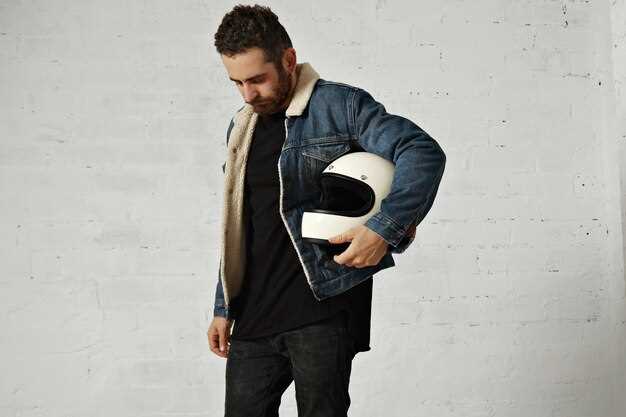

When it comes to motorcycle riding, ensuring your safety should always be a top priority. One of the most crucial pieces of gear a rider can invest in is a quality helmet. The right helmet not only protects your head in the event of an accident but also provides comfort and enhances your overall riding experience.
In an ever-evolving industry, manufacturers are constantly developing new technologies and designs to improve helmet safety and comfort. This article will explore some of the top motorcycle helmets available today, highlighting features that maximize protection while ensuring a comfortable fit. From lightweight materials to advanced ventilation systems, each helmet reviewed here offers something unique for riders seeking the best combination of safety and comfort.
Whether you are a seasoned rider or just starting your two-wheeled journey, understanding the importance of selecting the right helmet is essential. A well-chosen helmet can protect you during unexpected situations while also making your riding experience enjoyable. Join us as we dive into the world of motorcycle helmets and discover the top options designed to keep you safe and comfortable on the open road.
Key Safety Features to Look for in Motorcycle Helmets

When selecting a motorcycle helmet, prioritizing safety is crucial. Here are the essential safety features to consider:
1. Helmet Certification: Ensure the helmet meets safety standards set by organizations such as DOT (Department of Transportation), ECE (Economic Commission for Europe), or Snell Memorial Foundation. These certifications indicate that the helmet has undergone rigorous testing for impact resistance and safety performance.
2. Impact-Absorbing Liner: Look for helmets with a multi-layer EPS (expanded polystyrene) foam liner. This liner is designed to absorb and dissipate impact energy, reducing the force transmitted to your skull during a crash.
3. Shell Material: The outer shell material is also vital for protection. Common materials include polycarbonate, composite fiberglass, and carbon fiber. Each offers varying degrees of durability and weight, with composite materials often providing better strength-to-weight ratios.
4. Retention System: A secure retention system, such as a double-D ring or quick-release buckle, will keep the helmet securely in place during a ride. Ensure that it is easy to adjust and fits snugly without discomfort.
5. Visor Strength: The visor should be scratch-resistant and shatterproof, offering clear visibility while protecting your eyes from debris and UV rays. A helmet with an internal sun visor can add extra convenience in varying light conditions.
6. Comfort and Fit: An effective helmet not only protects but also provides comfort. It should fit snugly without being too tight, ensuring minimal movement during use. Look for padding that offers a good balance between comfort and safety.
7. Ventilation: Proper ventilation is essential to prevent overheating on warm days. Choose a helmet with adjustable vents that allow for adequate airflow while still maintaining safety standards.
8. Noise Reduction: Helmets designed for noise reduction help reduce wind noise, allowing for a more pleasant riding experience. Consider models with contours and padding that assist in minimizing sound infiltration.
By focusing on these key safety features, you can ensure that your motorcycle helmet provides the necessary protection and comfort for your rides.
How to Properly Fit Your Motorcycle Helmet for Optimal Protection

Ensuring that your motorcycle helmet fits correctly is crucial for maximum safety and comfort while riding. A properly fitted helmet not only enhances your protection in case of an accident but also provides comfort during long rides. Follow these steps to achieve the perfect fit:
1. Measure Your Head Size: Use a soft measuring tape to measure around the largest part of your head, usually just above the eyebrows and ears. Take note of the measurement in centimeters or inches. Use this figure to refer to the manufacturer’s sizing chart to find your appropriate helmet size.
2. Try Before You Buy: Whenever possible, try on the helmet in-store. Put the helmet on your head without fastening the chin strap. It should feel snug but not overly tight. The fit should be even all around, without gaps between your head and the interior padding.
3. Check the Position: The helmet should sit level on your head, covering the forehead without slipping back past the hairline. It should not tilt forward or backward. Adjust it as necessary to find the correct position.
4. Fasten the Chin Strap: Close the chin strap and ensure it is secure yet comfortable. You should be able to fit one or two fingers between the strap and your chin. The strap should feel snug but should not cause discomfort.
5. Conduct the Safety Test: After fastening, perform a simple test by moving your head side to side and up and down. A properly fitted helmet should not shift significantly. If it moves too much, consider trying a smaller size or a different model.
6. Evaluate Comfort and Padding: Pay attention to the padding around your head and cheeks. The padding should provide a snug fit without causing any pressure points. If the helmet feels too loose or uncomfortable, it may not provide the protection you need.
7. Consider Temperature: Keep in mind that some helmets may feel different once you begin to sweat. Choose a helmet with good ventilation to ensure comfort during warm weather rides.
8. Regularly Check the Fit: Over time, wear and tear can affect the fit of your helmet. Regularly check the comfort and snugness, especially if you have made any changes to your hair or if the helmet has been worn extensively.
Proper fit is essential for the effectiveness of your motorcycle helmet. Following these guidelines will help ensure that you stay safe and comfortable while enjoying your ride.
Comparative Reviews of Top Motorcycle Helmet Brands and Models
Choosing the right motorcycle helmet can significantly impact both safety and comfort during rides. This section provides comparative reviews of some of the leading brands and models available in the market today.
1. Shoei RF-1400: This model is renowned for its aerodynamic design and lightweight construction, making it ideal for long rides. The multi-layered EPS liner enhances safety by providing excellent impact absorption. Additionally, the RF-1400 features an advanced ventilation system that keeps the rider cool and comfortable. With its excellent fit and noise reduction capabilities, this helmet is a top choice for serious motorcyclists.
2. Arai Signet-X: Arai is synonymous with quality, and the Signet-X lives up to that reputation. Its unique elongated shape offers better stability and aerodynamics, especially at high speeds. The helmet incorporates a facial protection system and a moisture-wicking interior lining that enhances comfort during extended journeys. Arai’s commitment to safety is evident in the extensive testing and high safety ratings the Signet-X has received.
3. Bell Qualifier DLX: This model stands out for its affordability without compromising safety. The Qualifier DLX is equipped with a removable and washable interior, making maintenance easy. Its integrated communication system compatibility is a plus for riders who need to stay connected. The helmet’s construction provides significant impact resistance, making it a fantastic option for daily riders and weekend enthusiasts alike.
4. HJC RPHA 11: Designed for both comfort and speed, the RPHA 11 offers a race-ready profile that appeals to sportbike riders. It features advanced ventilation options, a lightweight shell, and a moisture-wicking interior that ensures riders remain comfortable regardless of the conditions. The helmet’s aggressive styling and superior field of vision enhance the overall riding experience.
5. AGV Pista GP RR: This helmet is crafted for professional use, offering unmatched safety and performance. The Pista GP RR features a carbon fiber shell that ensures a lightweight design while providing exceptional protection. Its unique ventilation system and wide visor cater to high-speed riding, making it a favorite among racers. The helmet’s interior is made from premium materials, ensuring a high level of comfort during intense use.
In summary, each of these top motorcycle helmet brands and models offers distinct features and advantages. Riders should carefully consider their specific needs, such as riding style, comfort, and budget, when selecting a helmet to ensure optimal safety and enjoyment on the road.





